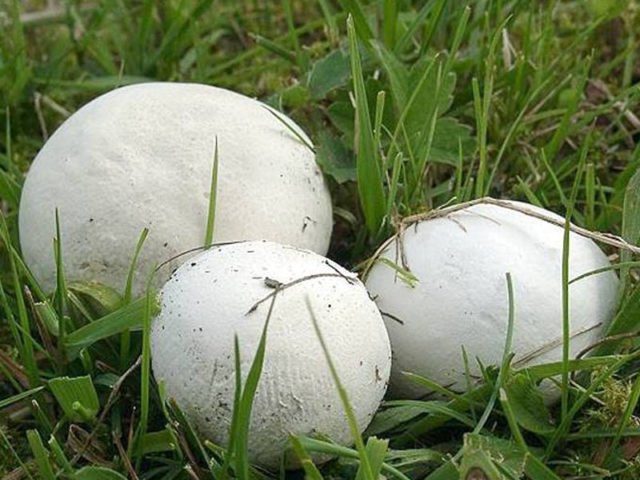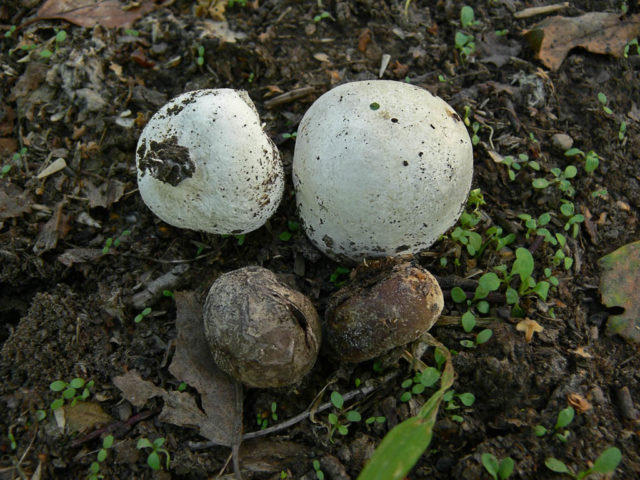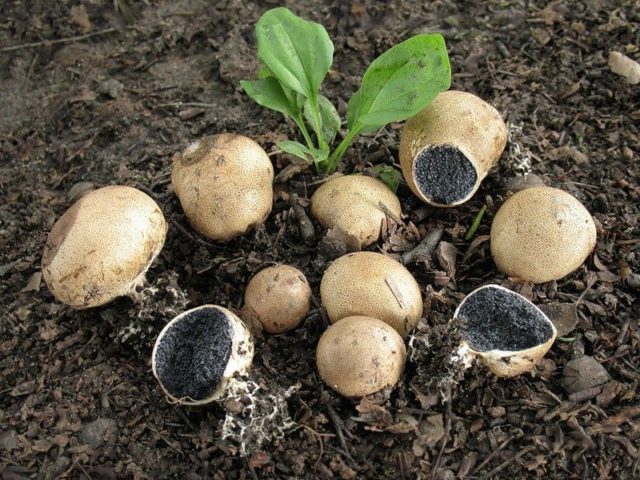Content
Porkhovka blackening is a conditionally edible species of the Champignon family. This specimen is referred to as rain mushrooms, in appearance it resembles a bird's egg. This mushroom is edible, but only young representatives of the species are used in cooking. Since this family contains poisonous and inedible specimens, in order not to harm your body, you must carefully read the external data, view photos and videos.
Where blackening flares grow
Porkhovka blackening is common throughout Russia. It prefers to grow on fertile, well-drained soil in deciduous forests, in open, sunny meadows, along roads, in parks and squares.
What blackening flares look like
The blackening flap belongs to the 4th group of edibility. Before going into the forest, in order not to collect poisonous specimens, it is necessary to study the external description.
The fruit body of the forest "inhabitant" is spherical, slightly flattened on the sides, no more than 6 cm in size. The surface is covered with a two-layer skin. The top layer of young representatives of a snow-white color, the skin is dry and velvety to the touch. With age, it takes on a coffee or cream color. In dry weather, the old skin is cracked, and the inner shell, painted brown or black, can be seen with the naked eye.
The pulp is whitish, darkens with age. In autumn, it degenerates, making room for dark spore powder. When the mushrooms are ready to reproduce, the skin breaks, a hole is formed for the release of spores.
Is it possible to eat blackening flares
Flap of this type belongs to the 4th group of edibility. For cooking, only young specimens with tender pulp are used. In older species, the fruiting body is tough and dark and can cause stomach upset when consumed.
Mushroom taste
The snow-white, fleshy pulp has a pleasant aroma and delicate taste. But before using this species in cooking, you must be completely sure of the authenticity of the species, since poisonous specimens can cause food poisoning.
Benefits and harm to the body
This specimen is not considered a valuable species, since it is inferior in chemical composition to mushrooms, mushrooms, chanterelles and boletus. But the composition of the fruiting body includes a large number of macro- and microorganisms. Blackening Porkhovka also contains rapidly digestible carbohydrates, which are responsible for brain function and satisfying hunger.
The benefits of flashing blackening:
- increases hemoglobin;
- strengthens bone tissue;
- removes toxins and toxins;
- strengthens the heart muscle;
- slows down cell aging;
- improves digestion.
Important! To improve the functioning of the body, it is necessary to use this type in small quantities and only in boiled form.
Porkhovka also has contraindications. Mushroom dishes are not recommended:
- children under 5 years old;
- people with peptic ulcer disease and severe heart disease.
Since this species has poisonous specimens, only an experienced mushroom picker should be able to collect the flap.
False doubles
This forest dweller has both edible and inedible counterparts. These include:
- Lead gray - an edible mushroom, only young representatives are used for food. It can be recognized by its small size, the fruiting body is spherical, up to 3 cm in diameter. The surface is covered with a whitish skin, which turns dark gray with age. The pulp is dense and fleshy, without a pronounced aroma and taste. It prefers to grow in small families on sandy soil, along roads, in illuminated glades, in woodlands. Begins fruiting from June to September.
- Common pseudo-raincoat - an inedible representative of the forest kingdom. It grows among deciduous and coniferous trees, begins to bear fruit from the end of autumn, it lasts until the first frost. The fruit body has a round shape, up to 6 cm in size. The skin is smooth, fine-flaked, painted in a dirty lemon or brown color. The pulp is firm, fleshy, white at a young age, gradually turns purple-black.
Collection rules
Mushroom hunting is carried out from early June to mid-September. Since the fruiting body absorbs toxic and radioactive substances like a sponge, the collection should take place far from roads and industrial enterprises. The found mushroom is carefully twisted out of the ground, and the resulting hole is sprinkled with an earthen or deciduous substrate.
Use
In cooking, only young specimens with a delicate, whitish pulp are used, since they have a delicate taste and a pleasant mushroom aroma. Before cooking, the harvested crop is thoroughly washed and peeled from the tough skin. Then they can be dried, boiled, fried and preserved. The fragrant, delicate pulp is perfect for preparing hot salads, sauces, first courses and baking fillings.
Conclusion
Porkhovka blackening is a conditionally edible species that is distributed throughout Russia. Prefers deciduous forests and fertile soil, bears fruit throughout the warm period. The harvested crop is ideal for preparing fried, stewed and canned dishes.












